Summer in Spain Travel Guide: What to Do & Visit in 2024
Disclaimer: Links on this page may be affiliate links. If you make a purchase after clicking a link, I may receive a small compensation to help power my site at no cost to you.
Are you planning a trip to Spain in summer? If so, you’re probably wondering, “What is Spain like in the summer?”
Spain is a very popular destination to visit in summer. Beaches, sun, festivities, partying into the night, and a warm Mediterranean climate — what’s not to love about summer in Spain?
So whether you’re looking to spend your time visiting the cities, taking in the natural beauty of the mountains and beaches in Spain, or heading to one of its many festivals, there is plenty to do and see in the Spain summer months.
Read this guide to find out more about spending the perfect summer holiday in Spain.
What is Spain like in the summer?
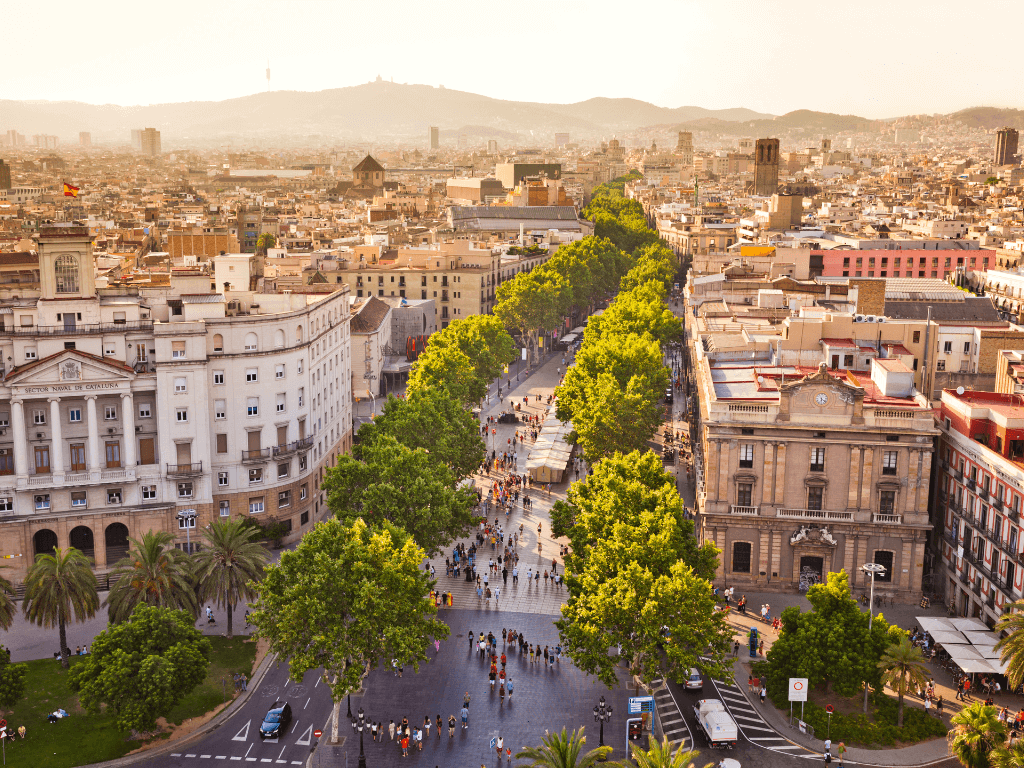
Compared to many other European countries, Spain summer weather is nearly perfect with sunny skies and low precipitation.
Plus, there’s always something to do in summer Spain — watersports on the beach, exploring a new Spanish city or cultural area, partying late into the night, or eating some of the best cuisine and wine in the world, to name a few.
We’d be remiss if we didn’t mention Spain’s beaches. Without a doubt, Spain is perfect for a beach holiday in summer. Its most beautiful (and crowded) beaches are along its southern coast, but there are plenty of secluded hidden beaches, too!
And of course, there are a multitude of festivals that take place every summer from La Tomatina in Buñol to plenty of local music festivals.
But the best part of Spain’s summers is that the streets are alive with Spaniards as well as tourists. It is the perfect time to take advantage of the outdoor cafes to sip sangria or beer, chat with locals or new friends, and indulge in Spain the way it’s meant to be enjoyed.
In sum, yes, Spain is good to visit in the summer!
What’s the weather like in Spain in the summer?
When it comes to the weather in Spain in summer, it’s generally sunny and hot. The average daily Spain summer temperatures range from 77-86 °F (25-30 °C). However, it can easily push to above 95 °F (35 °C) — especially in the interior near Madrid and southern Spain.
Precipitation is low in summertime in Spain, but humidity levels can remain pretty high.
What is the temperature in Spain in June?
The first month of summer, June is one of the best times to travel to Spain. The weather is sunny and warm, the rainy season has passed, yet the scorch of Spain summer time hasn’t set in. In June, the average temperature is around 70 °F (21 °C) to low 80s °F (25 °C).
What is the temperature in Spain in July?
The weather is hot and sunny in July, making it ideal for beach vacations on Spain’s coasts. The average temperature in July is 92 °F (33 °C). But don’t let that fool you, temperatures can easily reach 99 °F (37 °C). Pack plenty of sunscreen and a water bottle, and plan to stay indoors during the hottest time of day to beat the heat.
What is the temperature in Spain in August?
August is a popular month for tourism, especially for Europeans. The weather remains hot, dry, and sunny. The average temperature in August in Spain is 90 °F (32 °C). Expect warmer temperatures on the Mediterranean coast and inland with slightly milder temperatures in the northern regions.
Best Places to Visit in Spain in Summer
With sandy beaches, resort towns, and festivals galore, Spain is an extremely popular summer destination for travelers from around the world.
Here are the best destinations in Spain to experience in summer:
1. Barcelona
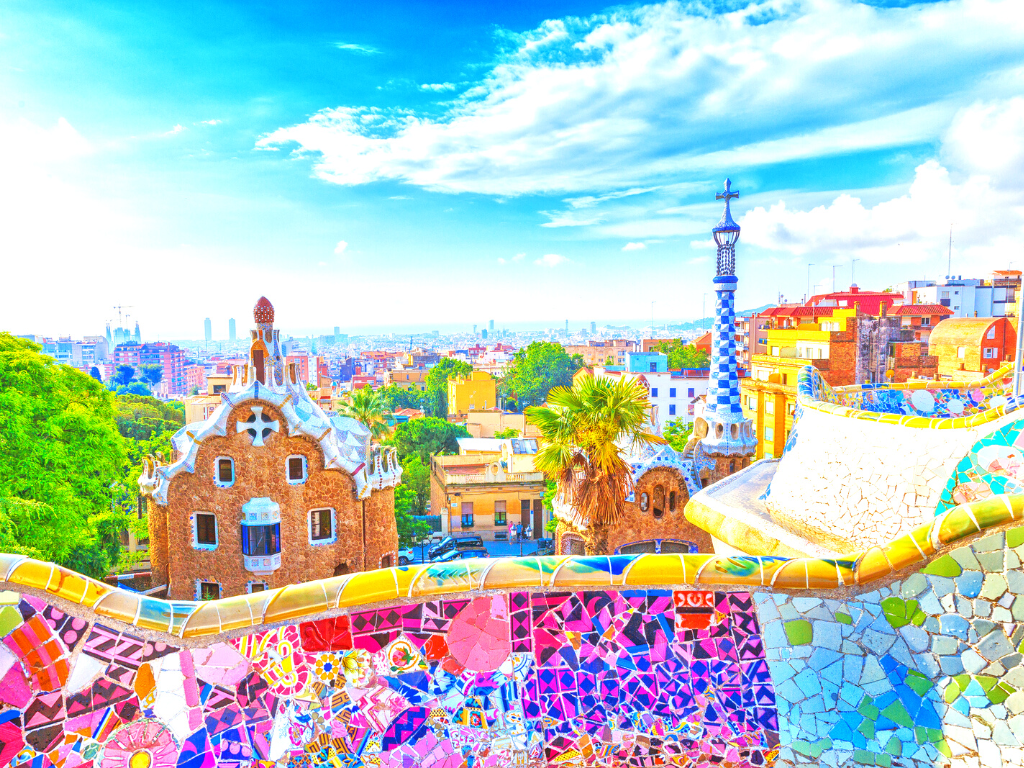
Catalonia’s capital city is one of the most popular tourist destinations in Europe, but there’s something extra special about being in Barcelona is the summer. The sun, sand, and sangria might have something to do with it!
The vibrant architecture of Antoni Gaudí — Parque Guell, La Sagrada Familia, Casa Batlló, and La Pedrera-Casa Milà — runs through the veins of Barcelona and is especially hard to ignore in the summer. The sunshine has a way of illuminating each work, helping you to experience it in a new way.
You can also visit Barcelona’s city beach for a few hours to cool down. Then, take a rest during the siesta before heading out for the evening. Sip a glass of sangria while you enjoy the lively atmosphere with locals and tourists alike.
On your summer travels, we suggest exploring the coast just outside of Barcelona. Visit the hidden beaches of Costa Brava, and find the small, tranquil bays that are perfect for swimming
2. Tarifa
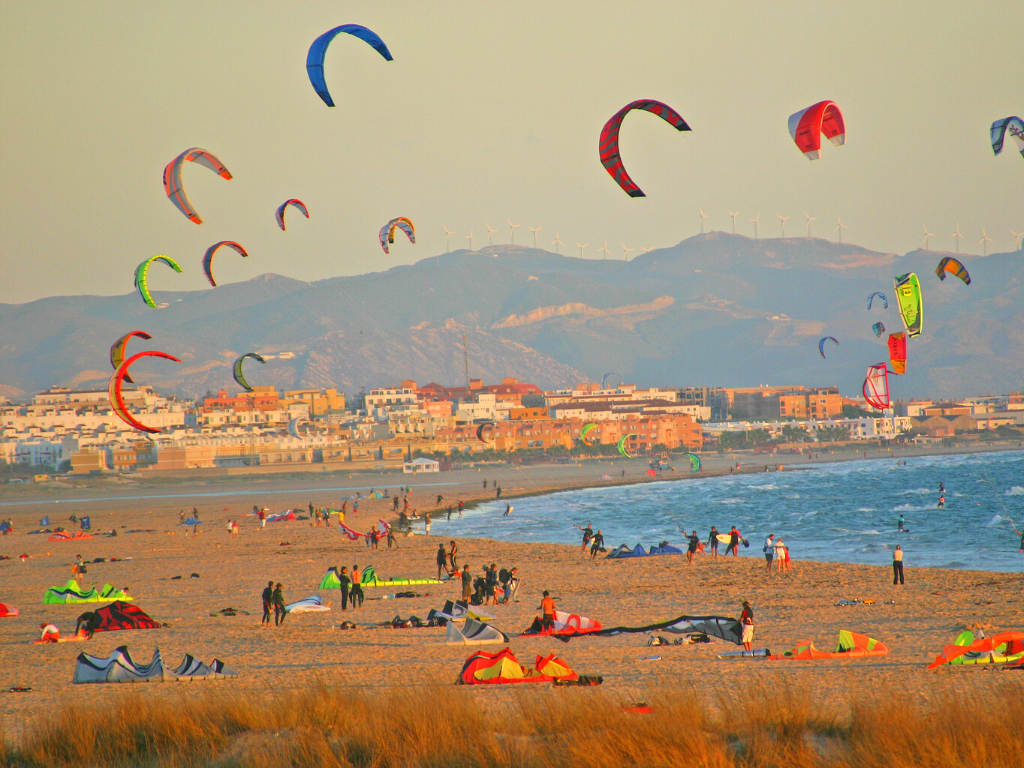
You’ll find Tarifa on the southern tip of the country, in the province of Cádiz. It’s so far south that on a clear day, you can see Morocco from Los Lances or Playa Bolonia beaches.
A chill and sleepy beach town, Tarifa is best known for its excellent watersport conditions that draw surfers from all over the world. To illustrate, the strong crosswinds on the peninsula produce the perfect conditions for surfing, windsurfing, and kitesurfing.
In fact, you’ll find Tarifa’s skies filled with kites from the kitesurfers below!
And you don’t have to be an expert either. You can book kitesurfing lessons as a beginner, and give it ago.
If getting into the water isn’t for you, whale-watching tours are also a huge draw in Tarifa. It’s possible to spot various species of whales on their migratory routes along the Straight of Gibraltar. Reserve a whale-watching tour, now.
3. San Sebastián
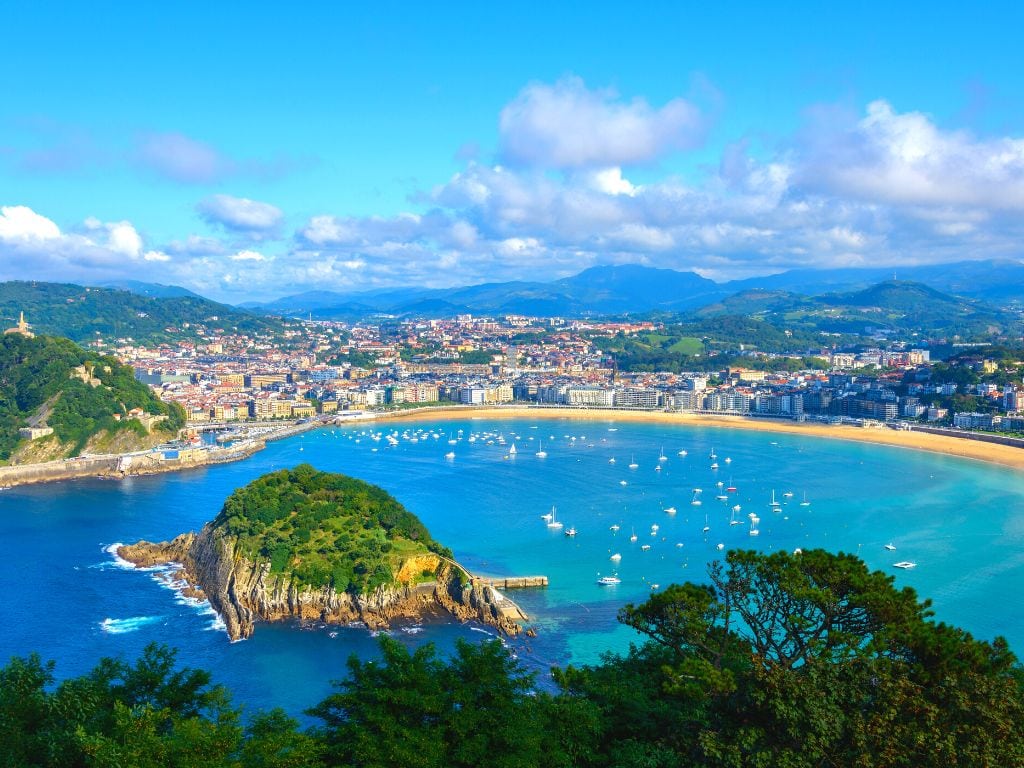
In the north of Spain, San Sebastián is a beautiful city on the Bay of Biscay in the Basque Country. Home to one of the best city beaches in Europe, a fabulous Old Town, and an unparalleled amount of Michelin Star restaurants, San Sebastián is very popular for Spain summer tourism.
Often referred to as the “Pearl of the Cantabrian Sea,” San Sebastián has a long city beach that is great for relaxing in the sun. Go early and claim your spot, as the beach fills up fast!
Certain areas are also popular with surfers.
But, what really shines is the cuisine. With the second most Michelin stars per capita in the world, you’re almost guaranteed an unforgettable meal. Understandably, many of these restaurants come with quite the price tag, so get your wallet ready.
4. Málaga
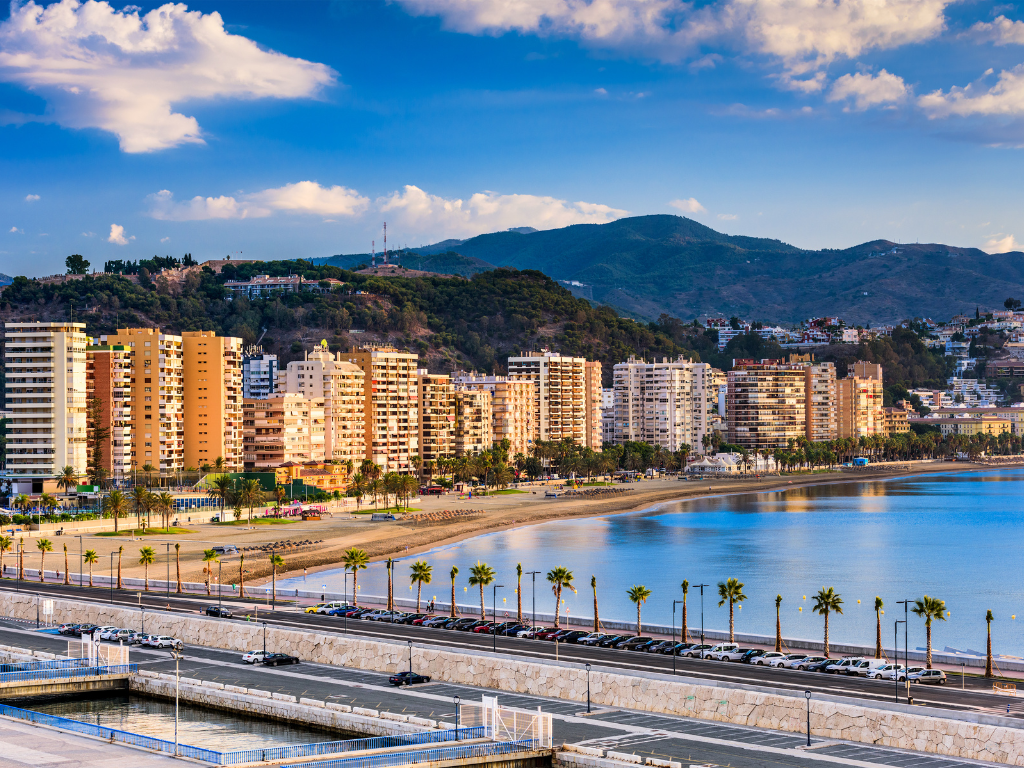
Andalusia’s second biggest city, Málaga combines old historical sites, modern art and architecture, and the relaxing vibe of a beachside destination.
You can easily spend a week in Málaga and the nearby coastal cities on the Costa del Sol.
Stop by Castillo de Gibralfaro, Cathedral of Málaga, and restored Moorish Alcazaba to learn more about the history of the city. Then, head to the Picasso Museum to learn more about the life of the painter, who was born in the Spanish city.
The city itself is reason enough to visit, but you won’t want to miss the large, golden-sand beach, charming restaurant terraces, and lively harbor area — especially at sunset.
But in order to really take advantage of Málaga in summer, you have to know how to go off the beaten path. There’s much more to Málaga than its coastline, and while you’ll want to enjoy a few beach days during your trip, consider hiring a car and heading inland to get a better sense of the region’s culture and history.
5. Granada
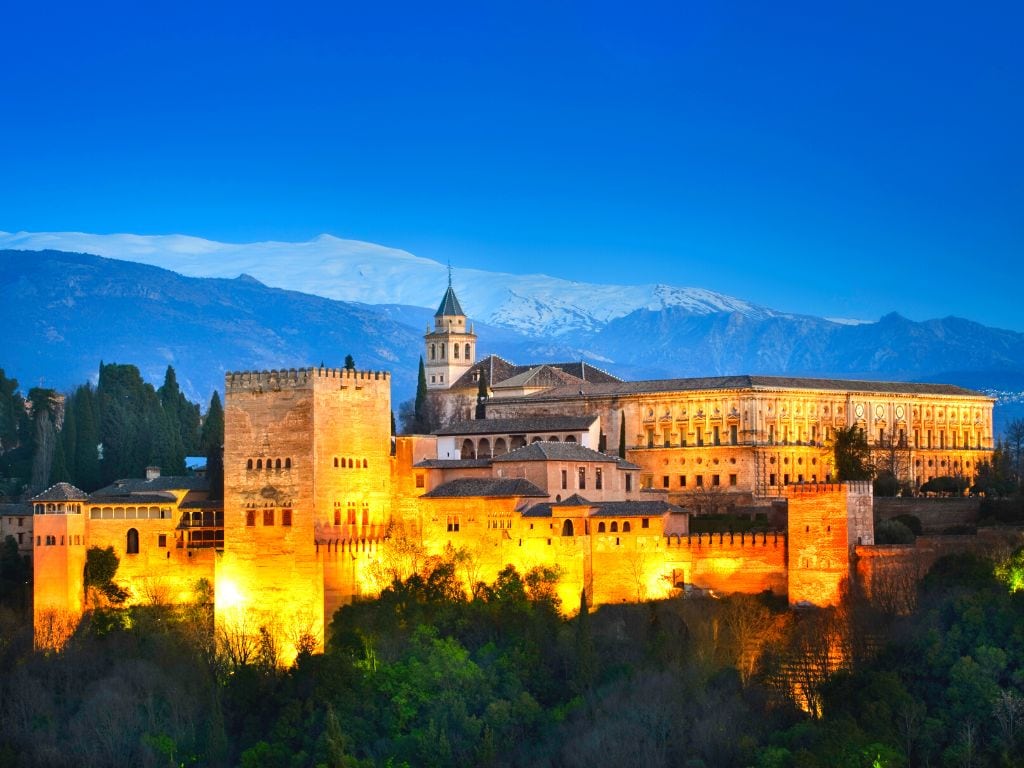
Granada is a great place to visit all year round, but it is especially alive in the summer months. With students gone for the summer, it’s an incredible time of year to enjoy the city’s history, food, and bohemian culture.
No visit to Granada would be complete without a full-day tour of the Alhambra. Built in the 13th century by Moorish rulers, the palace is known for its intricate architecture. You can also see some lovely views of the surrounding valleys and towns.
Granda’s southern location means it will be hot in the summer. But that also makes it a wonderful place to explore after the sun goes down. We recommend you head to the Mirador San Nicolás to overlook the illuminated Alhambra. Bring a picnic too, and join the other revelers.
6. Valencia
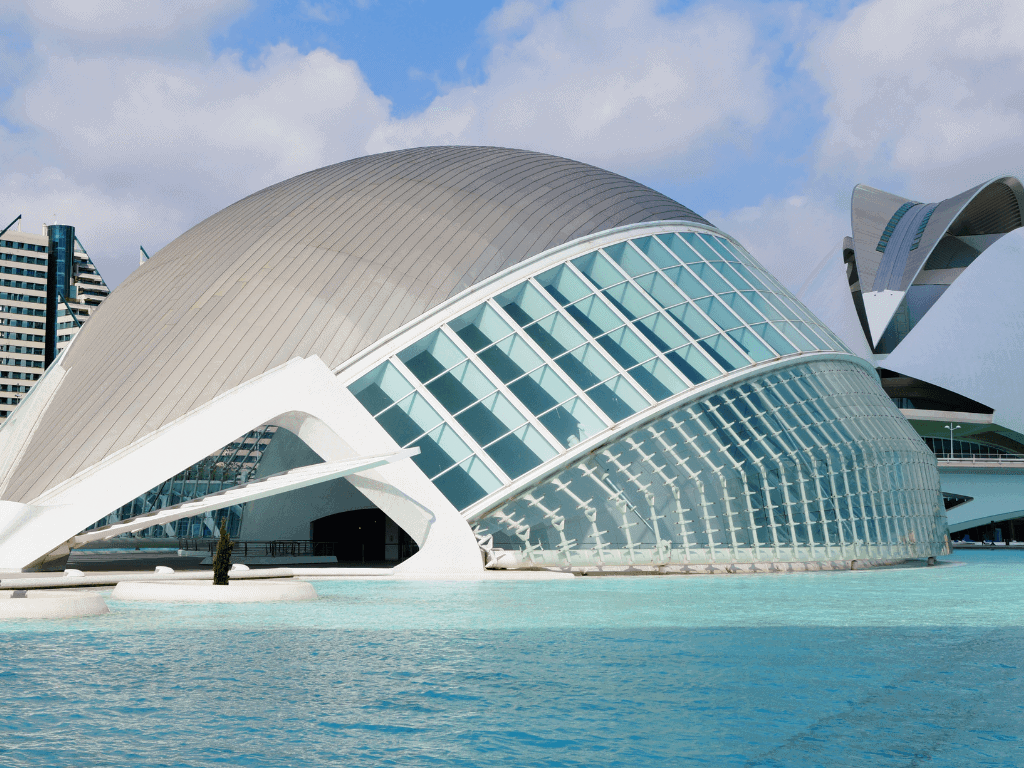
Valencia is Spain’s third biggest city and offers a more modern look Spanish life when juxtaposed with the warm and vibrant south. Its historic center has plenty to explore including a magnificent cathedral, market, and old city walls.
You don’t want to miss the futuristic planetarium and oceanarium, either.
As summer temperatures rise, locals also head to the beaches, of which there are a number nearby. Both beachside towns and the city is full of events, exhibitions, and activities.
One of Spain’s most famous dishes, paella, came from Valencia. This typical Spanish rice dish is best tested in Valencia, where it tastes better than anywhere else in Spain (We know from having lived in the Valencian province!). Attend a local paella-making class to learn more about the origins of the dish and how to prepare it at home.
7. Mallorca (Majorca)
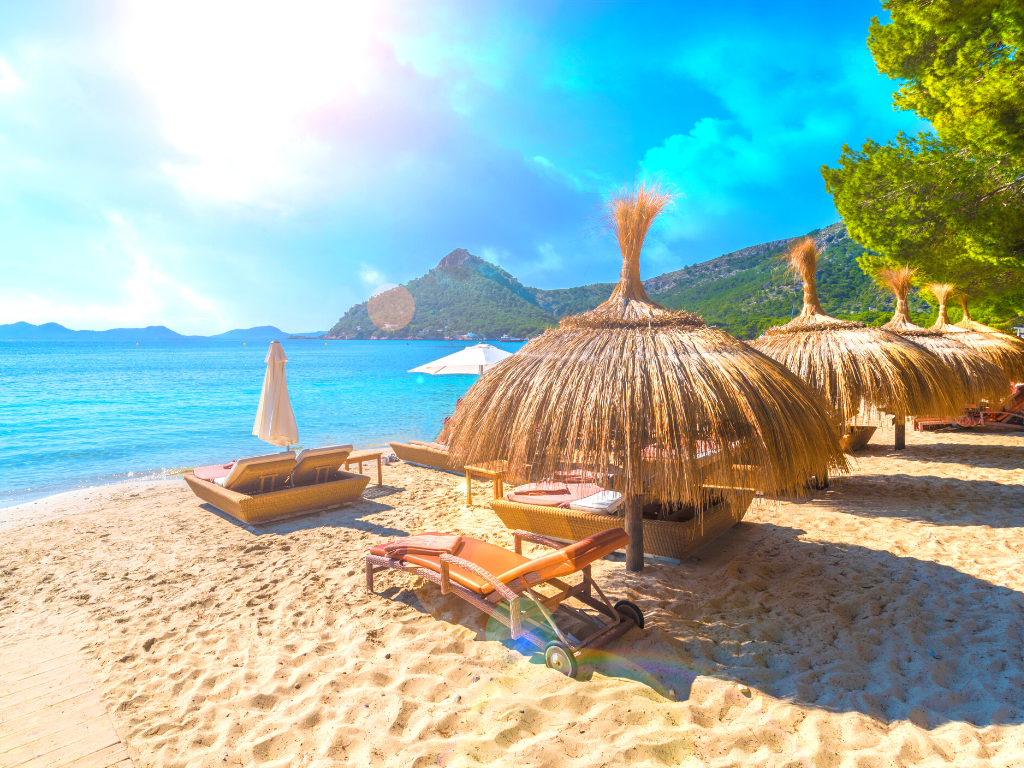
It’s easy to see why Mallorca (Majorca) is one of the most popular holiday destinations in Mediterranean Europe. This perfect Balearic island seems to have it all: including sheltered beaches, resorts, limestone mountains, and Roman and Moorish remains.
Head to the beach before it gets too hot and crowded later in the summer. Beach resorts or villa rentals are both great options, depending on your preference.
When you’re ready to hit the water, Mallorca has a ton of watersports on offer like windsurfing, sailing, scuba diving, and parasailing.
Of course a boat trip in Mallorca’s gem-colored waters is the perfect way to spend a sunny summer day!
But the beach isn’t all Mallora is famous for. Feel free to head to the Serra de Tramuntana mountains for hiking and biking, or rent a car in Mallorca for a scenic drive along the Cap de Formentor.
The capital Palma has a hilltop cathedral, a palace and Gothic quarter La Seu thats worth a day trip.
Best Things To Do in Spain in Summer
1. Take a beach vacation
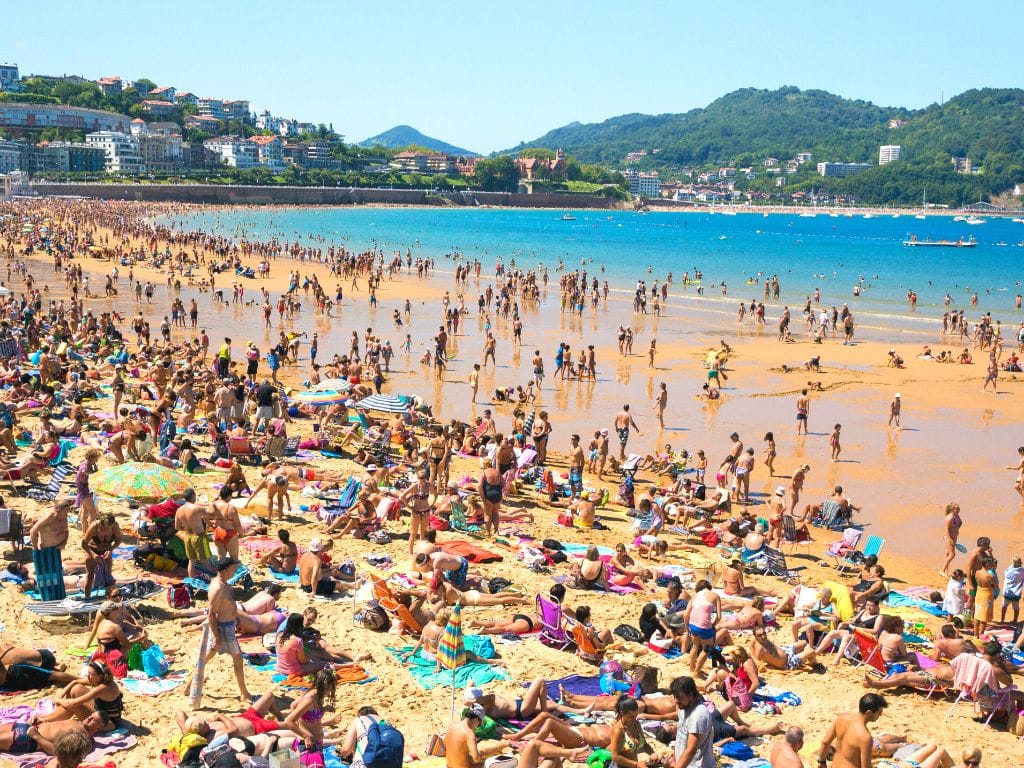
If you’re looking for a relaxing beach holiday, summer is the perfect time to head to the beach in Spain! Expect warm-ish water for swimming at beaches in Spain in summer and long days filled with light.
Boasting 5,000 mi (8,000) of coastline, there’s something for everyone who loves the water — visiting the lighthouses in Galicia, diving in Mallorca, sailing the turquoise waters of the Balearic Islands, or lying on volcanic beaches in the Canary Islands.
There are also plenty of beautiful, secluded places where you will be able to lie down on the sandy beach and enjoy the warm sun on your skin, away from the many tourists. The cliffs of Maro-Cerro Gordo in the Murcia region are great destinations for those who value their privacy and love tranquility.
2. Experience nature tourism
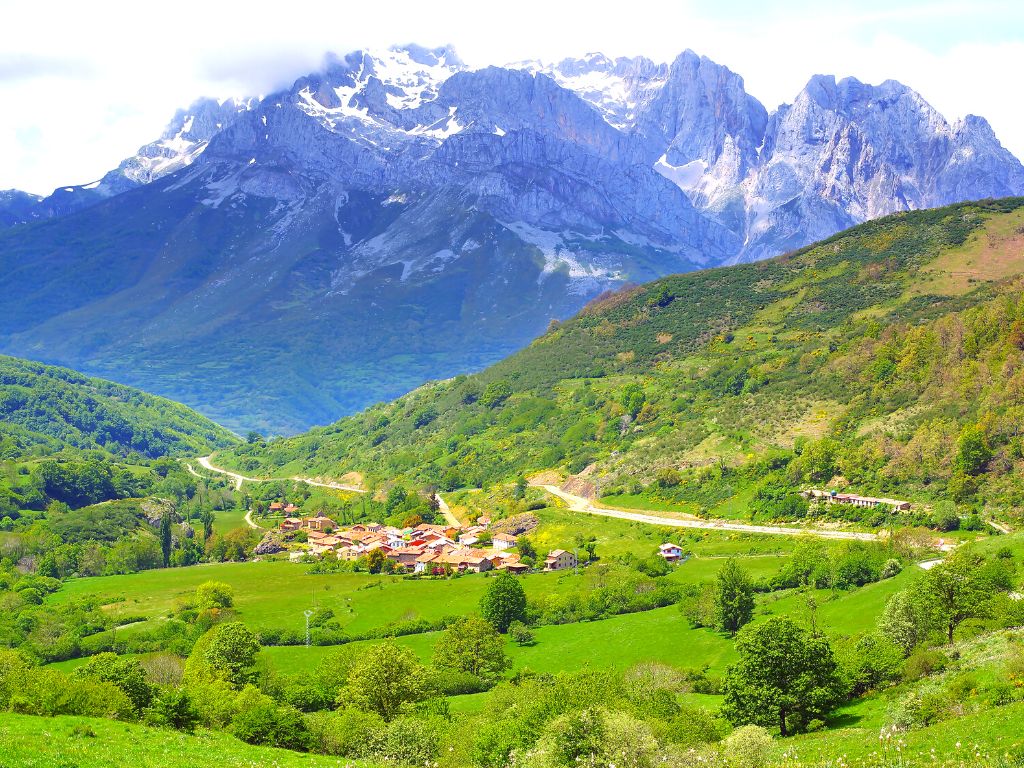
Mountain landscapes are excellent for escaping high Spain temperatures in summer! With sunny skies, the summits of the Pyrenees or the Picos de Europa National Park in northern Spain are two places any hiking enthusiast will love.
Summer Spain is also the perfect time to try activities such as rafting, canoeing, and river boarding. Try rafting on the Gállego river, or a boat trip through the Arribes del Duero.
The Camino de Santiago will hit peak season in July and August. While crowded and hot, it’s still enjoyable for sun-lovers. (I did my first Camino in June and July and only had a few hot days during a heatwave.)
3. Scuba dive in Mallorca
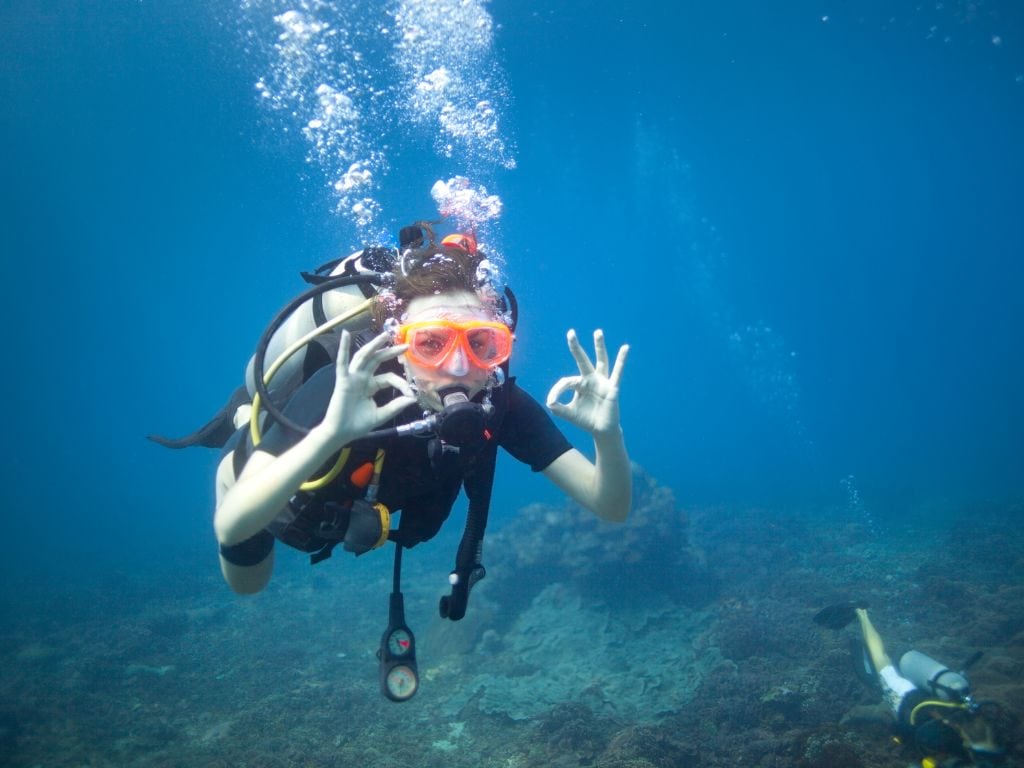
Offering a lot of beautiful scuba diving sites, Mallorca is a marvelous place to beat the heat by diving into turquoise waters. The beautiful coastline is actually home to some of the best caves and hidden dive spots in Spain.
Mallorca attracts both seasoned divers and newbies. You are welcome to learn how to dive in Mallorca!
4. Party hard in Ibiza
Although many Spanish cities get flooded with tourists from all over the world ready to enjoy Spanish nightlife, if you’re looking for the best summer nightlife in Spain, Ibiza is the place to be.
Practically synonymous with partying, Ibiza has many clubs and bars to choose from. Plus, it holds festivals and cultural events and hosts the most renowned DJs and artists in the world.
Summer is the high season in Ibiza (from May to September), so expect most places to be filled with tourists. If you like a social party scene and making new international friends, you’ll love Ibiza.
5. Sample Cold Tapas

Spain’s tapas attract travelers from all over the world. Tapas are small, shareable portions of traditional Spanish food. In each region, you’ll find different specialties and ways that the tapas are served.
But one thing that is certain is that cold tapas are ultra-refreshing on hot summer days and summer nights!
To start, try ordering gazpacho or salmorejo, two famous cold tomato soups you can enjoy with bread. Two summer salads to order are salpicon de marisco, a cold seafood salad and pipirrana, the “Spanish Summer Salad” with onion, tomato, green pepper, cucumber, and egg.
Best Spain Summer Festivals and Events
If you want to experience the culture of Spain, participating in one of its many festivals and celebrations is the only way to do it! Here are the top festivals of the Spain summer months:
1. La Tomatina in Buñol

La Tomatina festival is one of the most famous festivals you can take part in during your summer holidays in Spain. In the small town of Buñol, Spain, people engage in an enormous tomato fight — for fun!
The festival takes places the last weekend of August and attracts people from all over the world.
2. Noche de San Juan in Alicante
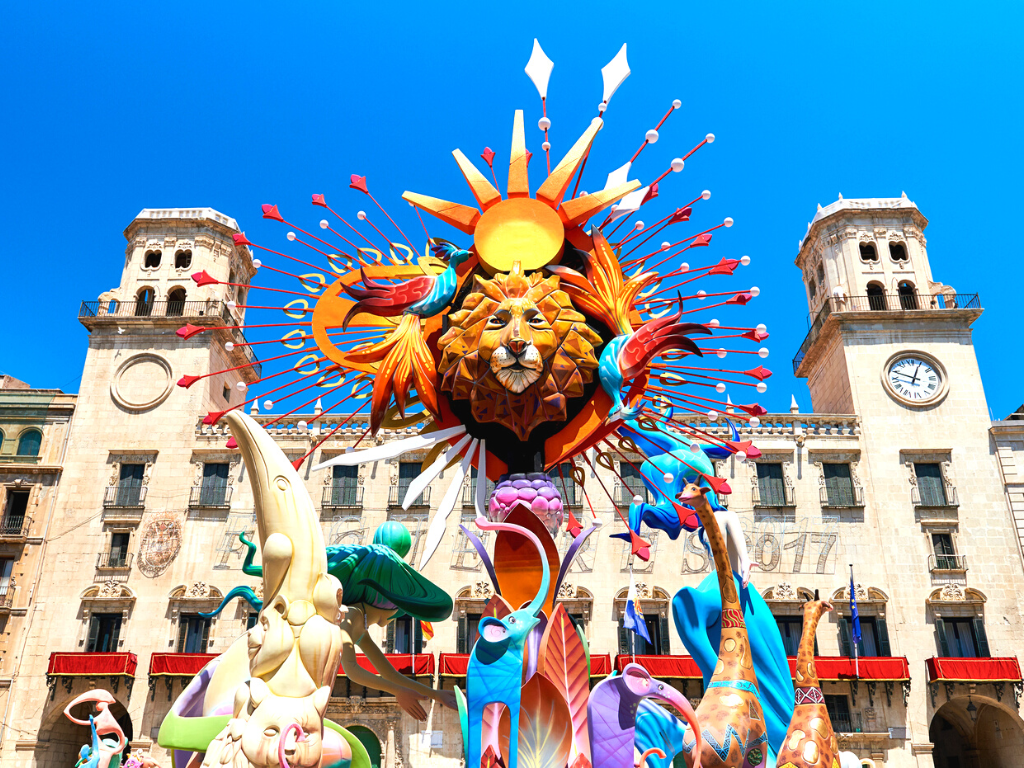
The Hogueras de San Juan (Bonfires of Saint John) is held annually between June 20-29.
The party celebrates the coming summer solstice (first day of summer). Over 200 paper mache monuments are built before being burned to the ground! A number of activities, music performances, fireworks, and other celebrations also take place this week.
On the Noche de San Juan, families and friends of all ages spend the night at the beach, setting bonfires. Traditionally, the bonfires represent the warding off of evil spirits and the protection of loved ones.
After saying a prayer as the bonfires light up the sky, enjoy barbecues and treats on the open campfire with friends.
3. Feria de Málaga
Every August, the Feria de Málaga celebrates the re-conquest of Málaga by Isabella and Ferdinand on August 18, 1487.
The week-long party begins with a midnight fireworks display in the Paseo del Parque. That night, you’ll see locals standing on balconies and flooding the streets to get a front row to the show.
The next morning, the festivities start on Saturday, and the streets of Málaga city come to life with colorful celebrations, a fair, flamenco dancing, music, and lots of eating and drinking with friends and family.
Attending the fair is a great way spend your Spain summer holidays!
4. Sanfermines (Running of the Bulls)
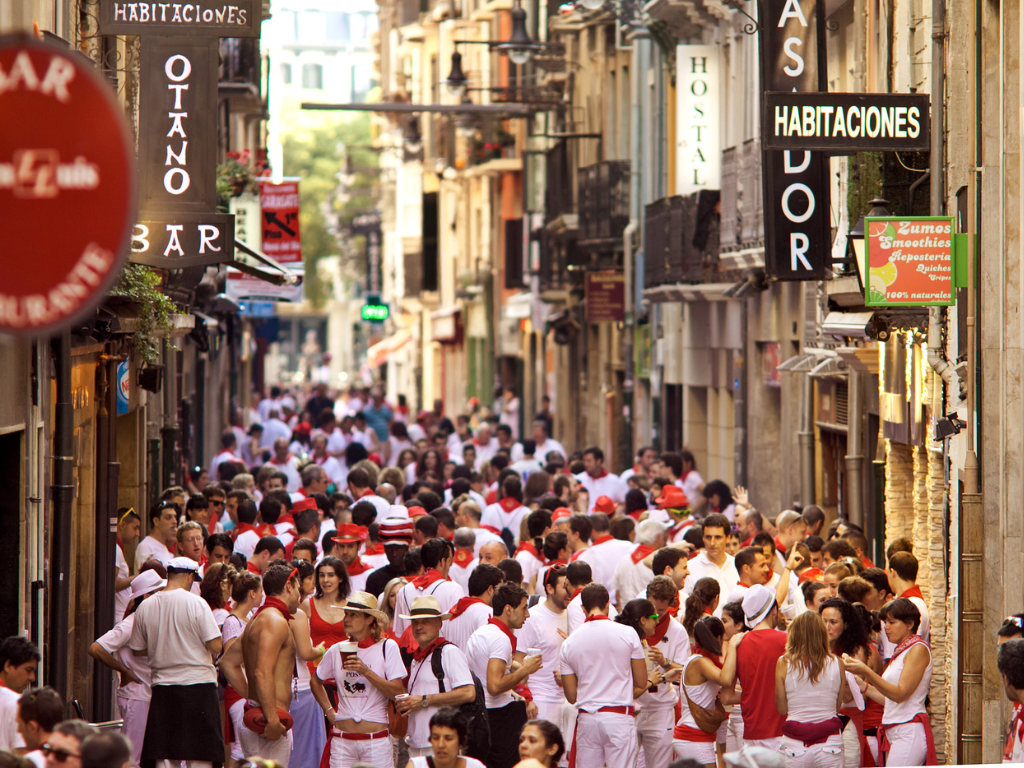
Arguably the most famous festival in Spain, the Running of the Bulls takes place in Pamplona in northern Spain each July. It honors the city’s patron saint, San Fermín.
A dangerous and controversial event, the week-long celebration sees hundreds of people running in front of six bulls through the narrow streets of the city!
But the running of the bulls is just a part of the celebrations. Locals and foreigners get together every year for all sorts of city celebrations that involve partying in the streets throughout the festival while wearing the typical white and red Basque costume.
5. Barcelona Beach Festival
The Barcelona Beach Festival is one of the biggest electronic music festivals in Spain.
This popular music festival takes place annually in early July on the Platja del Fòrum, and welcomes more than 70K people! It features some of the world’s top DJs and EDMs.
Whether you’re a dance music lover or just looking for something fun to do on your summer vacation in Spain, the Barcelona Beach Festivals is worth attending!
Accommodation During the Summer in Spain
When it comes to accommodations in the summer, rates tend to be higher. You also need to book well in advance for the best rates and availability.
The good news about staying in Spain during the summer is there are plenty of accommodation types for everyone.
All-inclusive resorts, 4 or 5- star hotels, budget hotels, vacation rentals — you name it, they have it in Spain! Just remember, accommodations are likely to be more expensive and sell out quickly in summer. Even hostels can be 2X higher for a dorm bed in Spain’s most popular destinations.
How to get around Spain in Summer
Depending on where you’re going and your budget, the “best” way to get around Spain will vary. Spain is a large country with excellent, fast trains, cheap flights and buses, and an excellent road system.
Here is some more info on getting around Spain during the summer:
Rent a Car in Spain
If you’re planning on doing a road trip or several day trips, consider renting a car in Spain. It’s easy to do online, and the road systems are well-maintained and marked.
Find a good deal for car hire on Discover Cars.
Train Travel in Spain
Spain has an extensive train network that connects cities and towns all over the country. They have been building out their high-speed train rails, making it fast, affordable, and convenient to get from city to city.
Book your tickets in advance on Omio or Trainline.
Budget Flights in Spain
Flying is one of the fastest ways to travel across Spain or out to the Spanish islands. Find cheap flights if you book in advance by using a search engine like Skyscanner.
Spain Bus Travel
Traveling by bus is a great option for budget travelers. The routes are sometimes slower, but the prices can’t get any better! Prices and schedules are sometimes hard to read, so do your research ahead of time.
Tips for Visiting Spain in the Summer
Summer is generally considered the “high season” in Spain seeing as the hot weather, school calendar, festivals, and miles of beautiful beaches all seem to fall into place!
Here are some tips for surviving Spain in the summer:
- Dress appropriately — Wear light clothes, a hat, sunglasses, and sunscreen as summers in Spain are hot.
- Book tickets and tours in advance — Tickets and day tours tend to sell out during the summer months, especially in July and August. If you are traveling to the Iberian Peninsula during these two months, it’s best to book tickets and tours before traveling.
- Reserve your accommodations, flights, and transport early — Prices rise and availability slows, so reserve your accommodations and flights/transportation several months before traveling.
- Get out early — When going sightseeing, get up and make the most of your day before it gets too warm and sunny.
- Eat fresh, cold meals — This is the perfect time for cold dishes in Spain like gazpacho.
- Take a siesta — Do like the locals, and take a break from being outdoors during the hottest time of the day. Head back out for the evening, when the streets come alive again.
What to pack for summer in Spain
When packing for Spain for the summer, bring light, breathable fabrics that can comfortably be layered, especially if you plan on spending most of your day out and about.
Here are some summertime packing essentials:
- Lightweight clothes — Pack light clothing that’s moisture-wicking. Women may want to bring lightweight sundresses.
- Walking Sandals — Get a pair of sandals with a supportive sole that can be dressed up or down for all occasions.
- Hat — It will protect you from the sun and keep you cool.
- Sunglasses — Protect your eyes from the sun in Spain, especially if going out on the water.
- Beach gear — Don’t forget to pack your swimsuit and towel for swimming.
- Sunscreen — Pack your own as it’s pricey in Spain.
- Pashmina and/or lightweight jacket — Early mornings and late nights may still be a bit chilly.
Summer in Spain: Frequently Asked Questions
Do people wear shorts in Spain in the summer?
Yes, it’s ok to wear shorts in Spain during the summer as a tourist. However, Spaniards don’t typically wear exercise shorts outside of physical activity, so we would recommend wearing “dressier” shorts like denim shorts or cargo shorts during the day. For evenings, consider lightweight cotton or linen pants.
Sundresses are very popular in Spain for women, especially during the warmer months, and are a great alternative to shorts all day long.
When is summer in Spain?
Summer in Spain lasts from June June 21st to September September 21st. School gets out in mid to late June, and most Spaniards take vacation during July and/or August.
What is the hottest month in Spain?
The hottest month of the year in Spain is July. The average daily maximum temp is 97 °F (36 °C) and the average low is 63 °F (17 °C). The latter half of July is particularly warm during the day, so plan to take a break indoors before heading out for the evening when the heat breaks.
How hot is Spain in summer?
In Spain, temperatures often heat up to 97 °F (36 °C) during the height of the summer. However the average temperatures during the summer in Spain range from 77-86 °F (25-30 °C). Depending on the region, it can get much hotter (inland and south) or stay cooler (north).
Why is Spain always so hot?
Spain retains its warm climate because it’s in the Mediterranean, which typically sees hot, dry summers and warm, wet winters. It also sees 3,000 hours of sunshine every year, on average!
Does Spain shut down in the summer?
No, Spain does not have a summer shutdown the way some European companies, like France, do. Summer is Spain’s high season when it comes to tourism, so things need to be open!
Stores, accommodations, and restaurants will be open during summer season in Spain, and museums will often have extended hours — especially in the larger cities and tourist areas.
Is Spain humid in the summer?
Though Spain is mostly dry, some areas can be slightly humid. The least humid month is July, and the most humid month is January. Eastern and northern Spain, as well as the islands, have higher humidity than central and southern Spain.
When should you avoid the sun in Spain?
You should avoid the sun in Spain in the mid to late afternoon, between midday and 4 pm. This is when the sun’s rays are at their strongest, and locals take a long lunch break to get out of the heat.
When is the best time to visit Spain?
The shoulder season is Spring (March-May) and Fall (September-November) is generally thought of as the best time to visit Spain to avoid extreme temperatures and crowds.
Is Spain too hot in summer?
Spain isn’t too hot to visit in the summer. On the contrary, it’s one of the liveliest times to be in Spain, despite the heat! Follow tips for staying cool like drinking plenty of water and staying out of the sun at the hottest times of day, and you may find you actually like Spain’s summers.
Is July a good time to visit Spain?
If you’re thinking about traveling to Spain in July, it’s a good time to visit. Do note that it’s the peak season which means you’ll see more tourists, higher rates for hotels, and prices, overall.
Is Barcelona hot in July?
Barcelona gets very hot in July. In fact, the long sunny days make it the perfect location for your holidays in Spain this summer.
Is visiting Spain in the summer worth it?
If you’re looking to visit Spain this summer, it’s totally worth it for the perfect summer vacation!
From unforgettable cultural experiences to fun in the sun during your summer break, we hope this Spain summer travel guide shows just why summers in Spain are so popular — and why Spain is one of the top vacation destinations year-round.
If Summer Spain isn’t for you…
After reading this, you might have come to the conclusion that visiting Spain in Spain (or Spain weather in summer) isn’t for you. If so, check out these other articles about visiting Spain during other months of the year:
